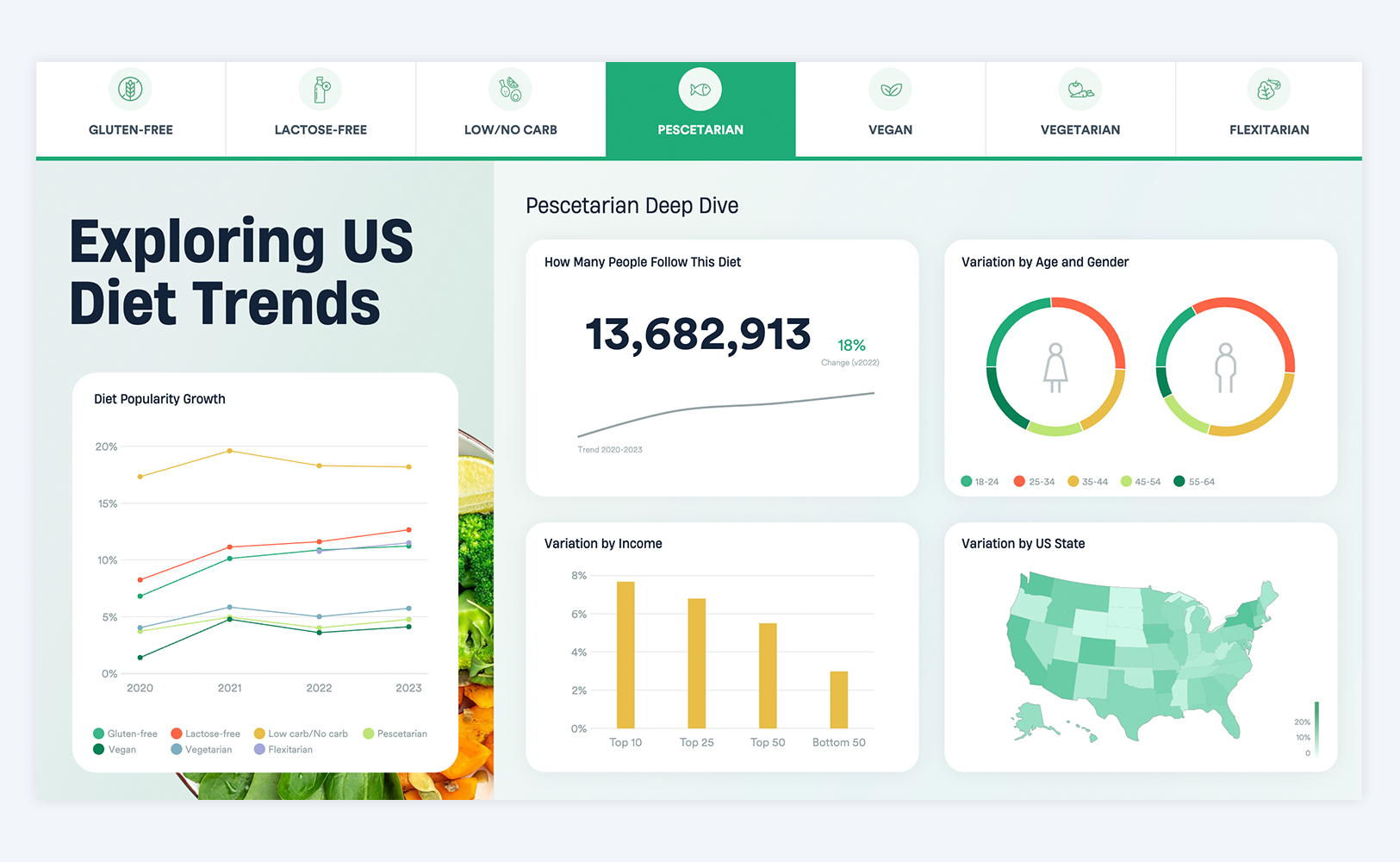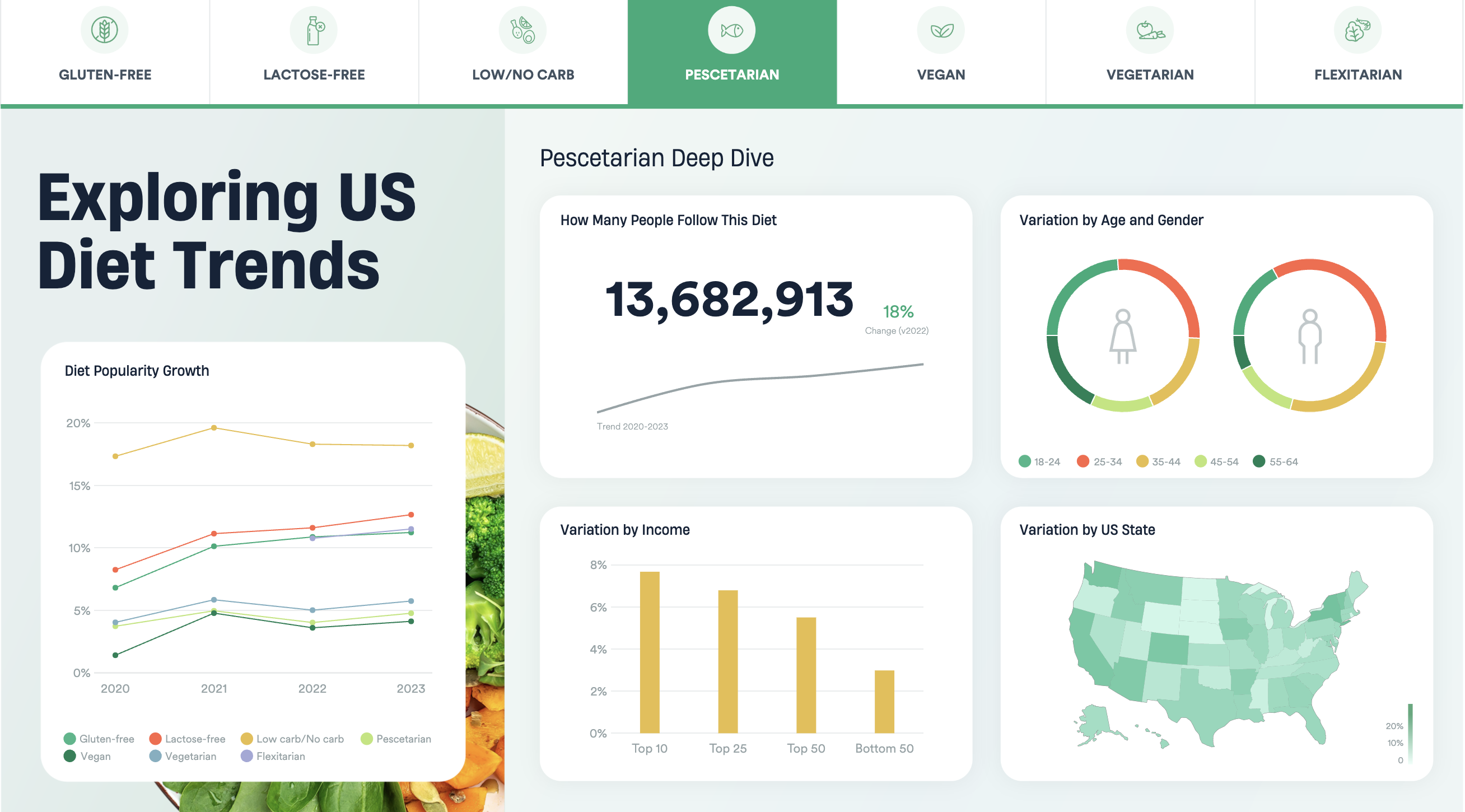
The Vegan Myth? Unpacking Real Diet Trends with Data

For professionals in the food industry, public health, or marketing, understanding consumer trends is crucial. That’s why we at Displayr, in partnership with Statista, a leading global business intelligence platform, are excited to bring you fresh insights from over 60,000 U.S. surveys conducted in 2023, along with historical data dating back to 2018.
Are Plant-Based Diets Really Taking Over?
It's easy to believe that vegetarianism and veganism are booming. From social media buzz on Instagram and TikTok to casual conversations at social gatherings, plant-based diets seem everywhere. Major brands are increasingly launching vegetarian and vegan options - just take a look at the menu of a typical fast food restaurant or a glance at the "meat" section in your local supermarket.
However, a closer look at Statista’s Consumer Insights reveals a different story. Here's what the data says (explore the diet and nutrition dashboard here):
- Veganism is estimated at 4% of the U.S. adult population (hover over the 2023 data point for 'Vegan' on the dashboard).
- Vegetarianism is slightly higher at 6%.
- Both saw significant increases during the COVID-19 lockdowns but have plateaued since.
- Flexitarianism emerged in the survey in 2022, already doubling vegetarian rates and tripling vegan rates, increasing by 7% in 2023.
- Diets focusing on low or no carbs engage nearly 20% of Americans, while lactose-free and gluten-free diets show solid growth trends.
Deep Dive into Dietary Trends
Click into this diet and nutrition dashboard and interact with the data:
- Use the hyperlinked menu at the top of the dashboard to move between Lactose-free and Gluten-free. You can see the substantial growth rates in the last 12 months. And it gets even more interesting if you look at the detail. These two trends are being driven by different people - the incidence of Lactose-free behavior is highest for young women. For Gluten-free it's middle-aged males.
- Discover why low or no carbohydrate diets have achieved broad appeal across a diverse population profile (estimates over 60 million Americans now engage in this behavior).
Want to see how to create a dashboard like this yourself?
Book a demo of Displayr and we'll show you.
Implications for Food Marketers
These insights suggest that the food service industry might benefit from focusing more on low carb, lactose-free, and gluten-free products, targeting them accurately based on consumer demographics. Understanding these trends through data allows marketers to position their brands effectively with early adopters and lead users.
Want to find out how we built this dashboard
Interested in how we visualize and analyze such compelling data? Book a demo, and we'll show you how to build your own interactive dashboard that could redefine your marketing strategies.




